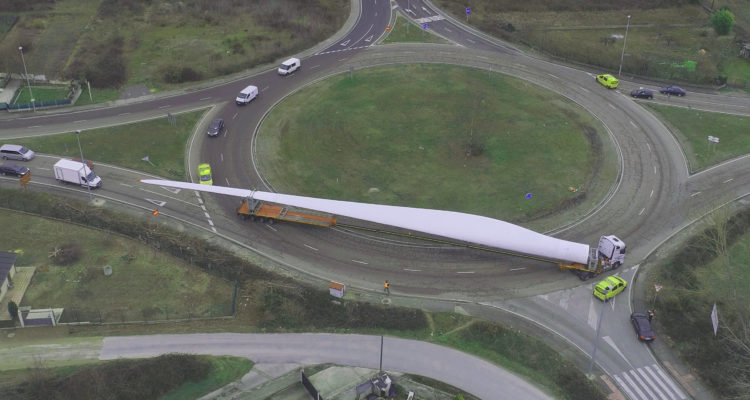Launched in September 2020, the ZEBRA (Zero wastE Blade ReseArch) project is led by French research center IRT Jules Verne, with partners that include resin manufacturer Arkema, R&D center CANOE, wind farm operator Engie SA, blade manufacturer LM Wind Power, glass fiber producer Owens Corning and recycling expert SUEZ. ZEBRA’s goal is to demonstrate, at full scale, the technical, economic and environmental advantages of fully recyclable thermoplastic wind turbine blades.
Nicolas Valloir, business manager at Arkema, spoke with Composites Manufacturing magazine about the project.
CM: What’s the background of the ZEBRA project?
Valloir: It goes back about five years ago, to when IACMI started working with the National Renewable Energy Laboratory (NREL) and with industry partners on a project that focused on finding a solution for end-of-life wind blades. Arkema became involved because we had developed Elium®, the first liquid thermoplastic resin designed for manufacturing composite parts with mechanical properties similar to thermosets. The NREL team produced a 9-meter blade and then a 13-meter blade, and we learned a lot about making wind blades with this resin.
The French National Research Agency was really interested in the work that was done, and in September 2020 it created the ZEBRA project to take this research further. They assembled multiple partners along the value chain and funded this program so we could go from manufacturing a blade all the way through to the recycling of the blade.
CM: How is the ZEBRA project different from IACMI’s work?
Valloir: The work at IACMI was on small blades, but here we are talking about blades that are 62 meters plus. We also needed to fine tune a resin with a longer filing time, so we changed the formulation. The blade manufacturer we’re working with already had its own setup, so we’ve had to adapt some things to work with that.
CM: Thermoset composites have been the material of choice for wind blades for many years. Why move to thermoplastics?
Valloir: The industry adopted thermosets at the beginning because of the way you can process them. The resin is in a liquid form, so you can wet out the fiber. It’s faster and cheaper.
We’ve had some thermoplastic wind blades in the past, but the resin was still in solid form, so you had to process it at high temperature, and it’s impossible to inject with continuous fibers.
Elium changes the paradigm because it is the first liquid thermoplastic resin. We can make it work like a thermoset resin. So you get all the advantages of thermosets in terms of processing, but at the same time, as a thermoplastic, it’s thermoformable and recyclable. That means we can infuse parts, we can do pultrusion and we can do filament winding like we do with a thermoset. But the material is still a thermoplastic.
The mechanical properties of the thermoplastic blades are very similar to the epoxy thermoset blades. In fact, the first results show that we could possibly be 5% better, which could potentially increase the life cycle of the blade. But we still have to correlate that with more iterations, so at the moment we can’t really say if we are better or worse than the current solutions.
CM: What’s the main value proposition for thermoplastic wind blades?
Valloir: On performance we’re about the same, and in terms of the price of resin we’re in the same ballpark as epoxy. We are seeing a reduction in curing time for thermoplastic wind blades, so you’re going to save in the manufacturing process.
But the key driver for thermoplastics is recyclability. In Europe and here in the United States, we have more and more demand every day for sustainable materials. The fact that we can recycle thermoplastics is why I hope this industry will adopt them in the future.
CM: What will the recycling process for thermoplastic wind blades look like?
Valloir: First, we’re not talking about recyclability 10 or 20 years in the future. We’re talking about recycling today because thermoplastic construction scrap manufacturing waste is recyclable. When you trim the blade, or have a bad pass, you have production scrap that can be recycled, which can be up to 10% of the material used.
For this we use a mechanical way of recycling, where you take all these production scraps, grind them up and then inject them like a plastic to make a different product. For one customer we’ve made a table that’s very much like casting resin from these scraps. You could also manufacture products like cell phone cases.
In this type of recycling, the performance is different from the original material, because you’re downcycling. But if you have a cell phone case made out of thermoplastic wind blade scraps, you’re going to increase its mechanical performance by nearly 20% in some cases.
Today people pay to bury this scrap, but with this solution they will add value and they can get the material for free. It’s not very complicated, and it doesn’t take a large capital investment.
CM: What about recycling when the wind blades reach end of life?


